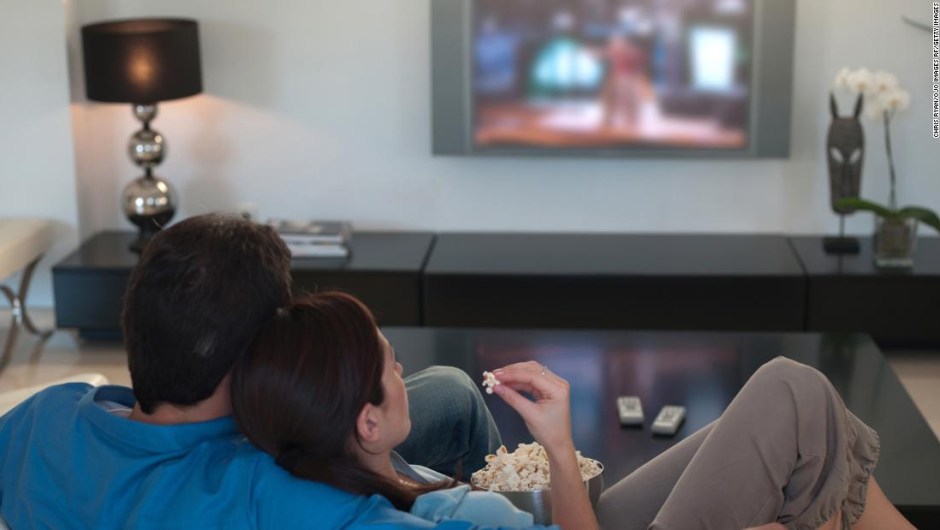Cable TV dominates, but setreaming services advance.
(CNN Business) -
Guess what percentage of all monthly TV viewing time is spent watching content on Netflix, the king of all
streamers
?
Thirty percent?
Twenty percent?
The answer, according to Nielsen, is much less: 6% of the television that American adults watch happens through Netflix. Another 6% pass through YouTube. Hulu represents 3%, Amazon Prime Video 2% and Disney + 1%. All
streaming
services
account for up to 26% of television consumption in the US, roughly the same as broadcast television, which accounts for 25%. Cable television represents 39% of all television consumption. A 9% viewing of "other", including VOD and DVD players, completes the pie.
Nielsen calls his audience measurement "The Gauge."
Each month, the research company plans to show how the streaming service "compares to traditional broadcast and cable television."
The first "Gauge" came out on Thursday and provided a major reality check to conversations about the future of video, entertainment, news, whatever.
My conclusion: the streaming service may occupy three-quarters of the attention of the media world, but at the moment it is only a quarter of the audience time.
Streaming could eventually cannibalize everything, but that day is a long way off.
But maybe you thought otherwise, maybe the streaming portion of the cake is bigger than you expected!
advertising
Nielsen as "referee"
John Koblin of The New York Times got his first look at the new Nielsen data on Thursday and, in particular, spoke with Netflix Co-CEO Reed Hastings, who endorsed the report. Hastings said Nielsen is "in a good place to referee or score how streaming is changing the landscape of American television." Their statements (he also said, "they have an incentive to be precise") will go a long way toward making this metric a new benchmark for the industry.
Quote from Koblin's story: “When asked about Nielsen's report that cable television and broadcast television, also known as linear television, continue to dominate viewing habits, Hastings said he was 'surprised' but I didn't expect it to last.
"It is obvious there is a time frame in which
streaming
becomes linear," he said.
'At 6 percent a year, it's not going to be long.'
According to Nielsen, the share of streaming was around 14% in 2019, around 20% in 2020, and now it's 26%, so that's what Hastings meant by 6% per year.
The streaming battle: what to expect in 2021?
1:40
Hastings and Kilar
"The Gauge" tells us nothing about the performance of individual shows or movies.
And streaming services don't tell us much either.
So there is still a lack of visibility in industry decisions.
But the paucity of data also makes every occasional glimpse, like "The Gauge," more important.
Hastings tweeted about the numbers on Thursday, writing: “It's amazing that most of the TV time in America is still linear.
The streaming team needs to improve.
He tagged Jason Kilar, the CEO of WarnerMedia, and said "we need you on the board too," a reference to the fact that HBO Max accounted for less than 1% of all TV viewing and streaming in May, according to Nielsen, and therefore it did not.
you don't get it on the pie chart.
Kilar responded that WarnerMedia "is already heavily on the board in that bigger piece of green pie," citing cable brands like TNT, TBS, CNN, HBO and Cartoon Network.
"Proud to serve customers the way they choose," wrote Kilar.
"It's fun to also be the (most) fast-growing upstart at @hbomax (2 Qs followed by 2.5M + added in US)."
That's the job of entrenched media companies, right?
Running traditional TV and streaming on parallel tracks, knowing that streaming is the way to grow.
Post-pandemic scenario: hibernate to watch television 0:49
Active versus passive
Nielsen's pie chart shows the difference between active and passive audience, IMHO.
Most streaming consumption is active, meaning people choose a particular episode to watch at a specific time that works for them.
Some of the consumption of cable television and broadcasts is also active, but a greater proportion is passive, that is, people turn it on and see what is happening.
They can leave it on for hours or casually switch between some of their favorite channels.
My instinct is that the average family wants both: Sometimes they want to bow down and pick a show (I'm still way behind on "The Handmaid's Tale") and other times they want to watch CNN and leave it on.
That's why "The Gauge" is useful: Nielsen offers a holistic view of typical television consumption.
streaming Cable TV












